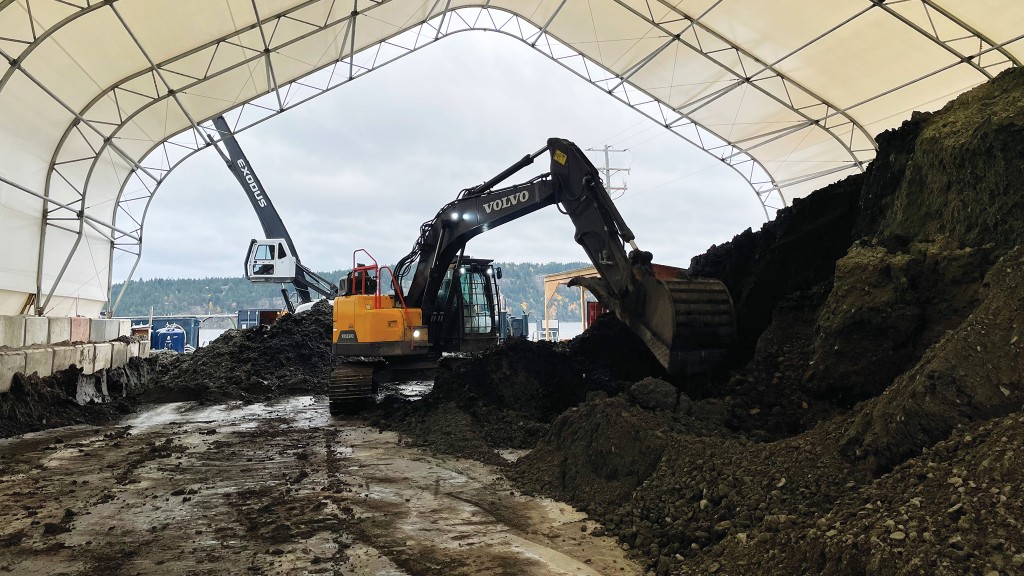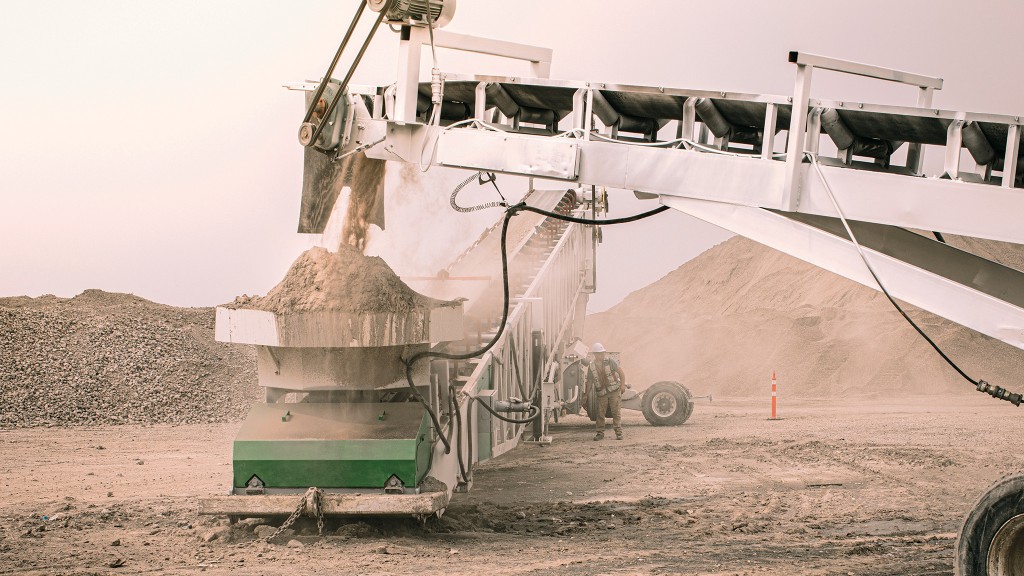How lessons learned from handling dredging soil aid GRT in recycling contaminated aggregate

Contaminated soils can come from many places when earthmoving projects are undertaken in cities. Outside of our cities, there are other potential challenges when it comes to contaminated soils, and there is a need to clean that material up before it is disposed of or reused.
On Vancouver Island a continuing need for shipping channels to be dredged and efficiently managed has generated a steady flow of contaminated materials - and often some unique contaminants. For one aggregate processor, cleaning up those dredged materials started a process that has led to a major effort to recycle both dredging soil and excavated dirt on land.
GRT started out as part of a construction company in the mid-2010s when a challenge arose surrounding dredging work in the busy Esquimalt Harbour at Victoria, B.C. Home of the Canadian Navy's west coast fleet, Esquimalt was being updated and improved and that required dredging. However, that dredging left the operators with a problem, according to GRT CEO Peter Reid.
"The dredge material they excavated out was taken to Seattle for disposal – it cost a lot of money, because it was both soil and water," he explained. "GRT was formed to take that soupy dredge and dewater it – take the water out of the soil. That way, the disposal would cost a lot less money, because you aren't disposing of the water."
Reid, a trained environmental engineer who has built a career on managing contaminated soils, said the process of dewatering provided the team working on that project with some new insight on how to improve the process.
"In order to discharge that water we had to treat it, and when we treated the water and tested the soil it didn't have the same concentrations as it did in situ because of the process," Reid said. "We said ‘okay, this is working fairly well - can we recycle more water through this aggregate?' Instead of just using the water to dewater the aggregate, we put more water through it to pull more contaminants off of it."
Chemicals and random objects turn up in soils
Contaminants in soil can include a variety of different problem chemicals and materials, from metals to hydrocarbons and salt, among others. Development of brownfield sites turns up numerous challenges that need to be met, and dredged soil has its own problems.
"If you have a piling in the ocean, it's got creosote on it. So, we have creosotes, polycyclic aromatic hydrocarbons, parabens, and pentafluorophenyl," Reid said.
Beyond the chemical contamination, dredge soil tends to have other material, especially around working harbours such as those around Vancouver Island.
"You do find whatever people have thrown out - you find old books, old shoes, bottles from around the world . . . people just throw them overboard, and it all gets deposited in the top layer, which is what comes out for dredging," Reid described. Other jobs have turned up such contaminants as dozens of tennis balls, duck decoys, Cheez Whiz jar lids, and more - making for a unique challenge when it comes to processing.
Management and disposal of contaminated soil is becoming more and more of a challenge. Generally, soils are disposed of in landfills. The problem, Reid points out, is that the landfills are filling up - and old landfills are becoming prime real estate.
"What we used to do back in the 1990s, was we'd dig it up and move it to a landfill . . . we didn't know how to treat it," he said. "Now the landfills we brought that soil to are being moved to other landfills because the land has become so valuable. We're moving it from one site to another site, moving the same soil over and over again."
Clean treated soil ideal for reuse
The answer, for GRT, is to clean and reuse that soil in the region where it is produced. To that end, GRT began focusing fully on recycling contaminated soils, both from dredging and excavation work on land, in 2019, and in 2021 expanded into a full-scale operation based in Nanaimo, B.C.
"We successfully worked with the Nanaimo Port Authority, the regional district in Nanaimo, and the Snuneymuxw First Nation and opened up our full-scale plant - we call this a pilot plant, but it does 10,000 tons a month," Reid said. "In that time we've worked on different types of aggregates, anything from clays to different sands to rocks. We've worked on a whole bunch of different contaminants."
The Nanaimo plant is a custom design based around equipment developed for the mining industry by CDE, Reid said. From there, GRT has added water treatment systems and its own innovations to provide a range of approaches to handle whatever contaminants may be present.
Soil comes into the plant and water is added, then the slurry goes through a series of physical separations. Depending on the contaminants and other factors, the water is treated with additives to help remove materials, then the mixture is sent to a centrifuge or hydrocyclone where the water is removed for its own treatment process.
Different parts of the plant and different additives are used for different needs, Reid said, all based on years of research and development work by industry experts.
"There was a lot of trial and learning - I'm not going to say ‘trial and error,' but there was trial and learning in the beginning to come up with these recipes as to how to make it work," he said. "We're processing soil from Vancouver Island and soil that comes from Vancouver by barge, and the soils are different - the recipes for Vancouver Island are different than the recipes from the Lower Mainland."
At the end of the process, GRT is supplying regional industry with several aggregate products: oversized greater than four inches, four-inch minus, pea gravel, a wash sand, and clay.
With growing demand for recycled materials in construction, Reid said GRT is hoping to expand its capability moving forward.
"We are actively looking for land in the Lower Mainland to be able to do the Nanaimo plant but bigger. Based on what happens in that location, we could go elsewhere. Excess soils are a problem everywhere," he said. "From a societal standpoint, in 10 or 15 years we . . . won't look at this soil as a waste, we will look at it as a resource."



